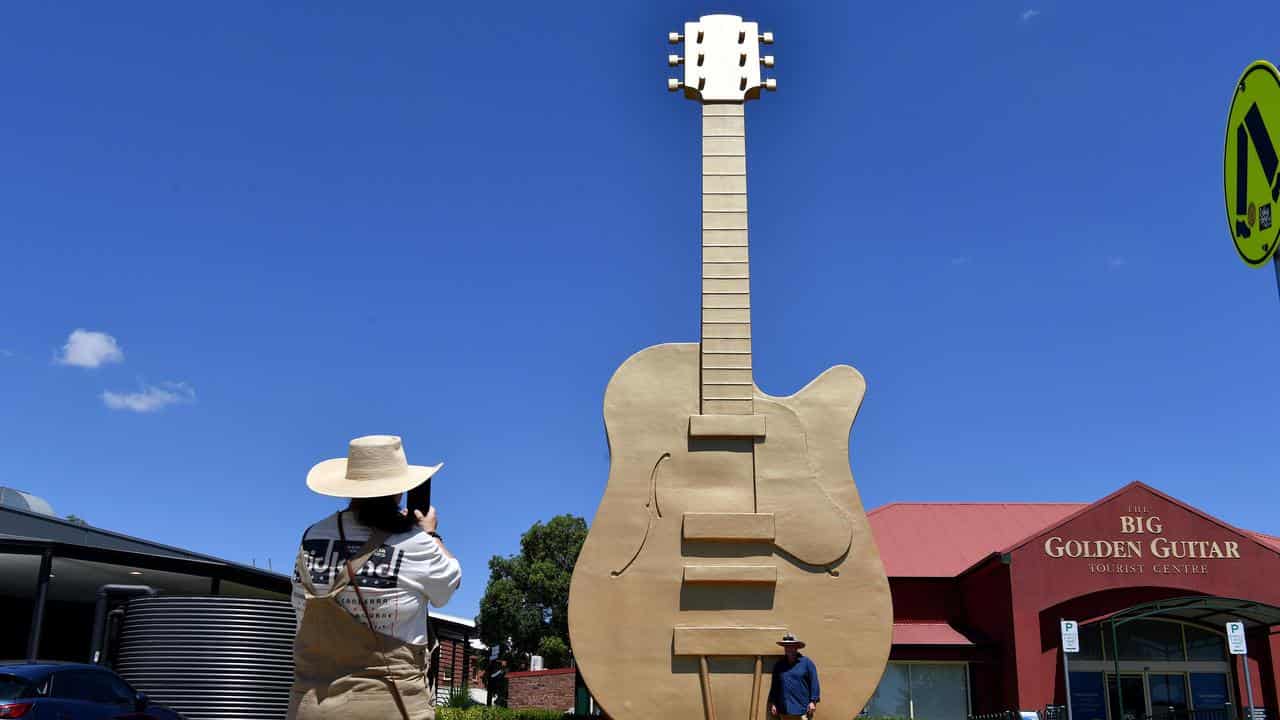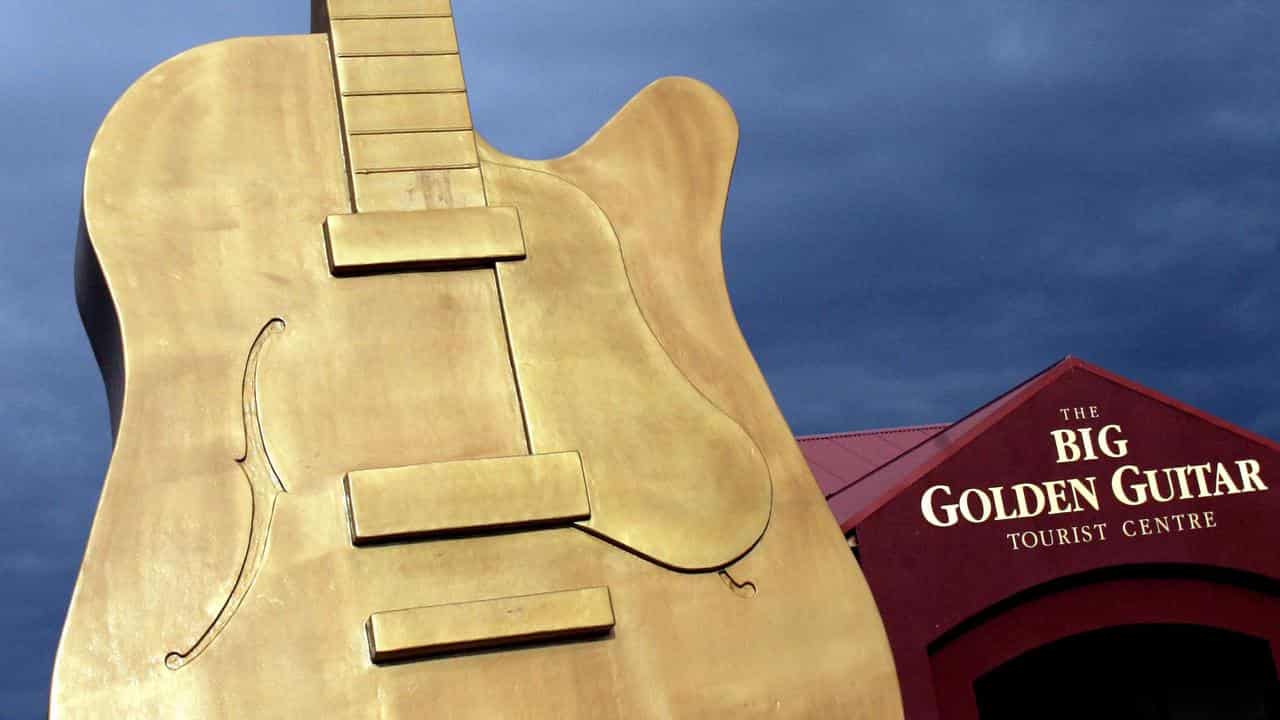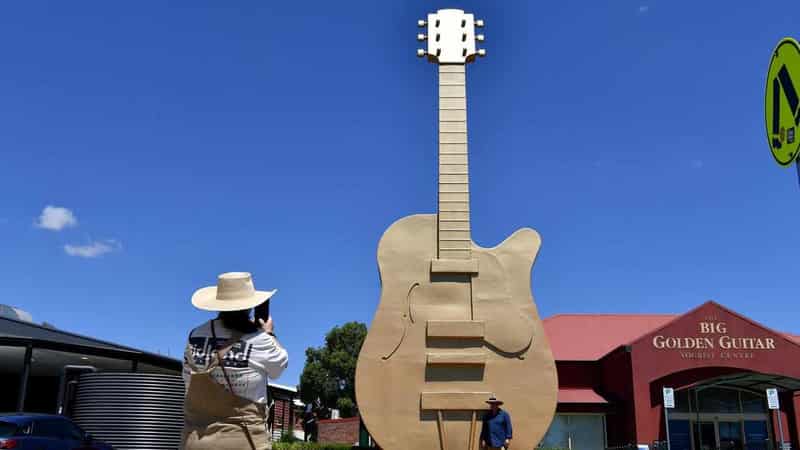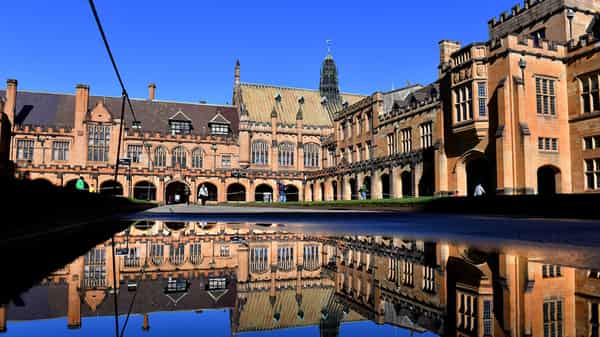
Standing at 12 metres tall and weighing half a tonne, the Big Golden Guitar glimmers under Tamworth's unforgiving summer sun.
Along with the Big Pineapple, the Big Banana, the Big Merino and the Big Galah, the Big Golden Guitar is a beloved part of the nation's curious collection of "big things" scattered around regional Australia.
More than 100,000 visitors stop to peer up at the landmark every year, and a Tamworth Country Music Festival survey once found 72 per cent of Australians recognised it as a symbol of the annual celebration.
As the sun beat down on the festival's finale weekend, Yannick De Silva and Mary Nguyen posed in front of the guitar in 35C heat.
Mr De Silva, who studies medicine in the regional city, likes to watch the landmark come into view as he travels along New England Highway.
"It's smaller than I expected," he said.
"I thought it would be more like the Big Merino or the Big Pineapple or the Big Banana."
Festival manager Barry Harley acknowledges a bias when he says the Big Golden Guitar is more significant than those other tourist stops.
"It symbolises we're the only city - with the exception of perhaps Nashville - that is wholly identified with one genre of music," Mr Harley told AAP.
"But more importantly, where a genre of music has identified one city as the foundation stone for its industry."

Though it was opened by the father of Australian country music Slim Dusty in January 1988, the Big Golden Guitar's story begins with the festival itself.
After the introduction of television in 1956, radio stations began to produce low-cost specialist shows as their evening audiences dwindled.
Tamworth station 2TM aired country music segment Hoedown, which attracted loyal fans in farmers, truckers and miners across rural Australia and beyond.
Host John Minson, general manager Max Ellis and other radio executives realised they were onto something and the station christened Tamworth the country music capital of Australia in 1969.
"With no research, no background, no reason, no rationale, they decided to call Tamworth the capital to encapsulate what they were promoting," Mr Harley said, with a laugh.
"There would have been gnashing of teeth and hissing noises coming from a lot of Tamworth."
They decided country artists should be recognised with awards and the first Golden Guitars were held in 1973, with sculptor Harry Frost commissioned to make the trophies.
Frost modelled the statuettes on a Gretsch cut-away electric acoustic guitar and a Gibson, to recognise the evolving styles of the genre.
By the 1980s, thousands of fans were attending the awards so the organisers hired the biggest circus tent in the southern hemisphere to host them.
A terrifying storm hit during the 1981 ceremony, ravaging the tent and forcing emergency evacuations.
"These giant titanium poles, which were holding the tent up, were physically leaving the ground and jumping," Mr Harley recalled.
"We had over 4000 people in there."
The awards were moved to part of a fibreglass factory warehouse, where ambulances chassis were manufactured.
The factory's fibreglass expert was later commissioned to build the Big Golden Guitar in the image of the award trophy.
Mr Harley said the landmark helped Tamworth cement its reputation as the home of country music, a movement that Slim Dusty was instrumental in.
"There's that connection to the industry through that icon of the Golden Guitar - whether it be a Big Golden Guitar or a little one.
"We've tried to maintain that for 52 years."









